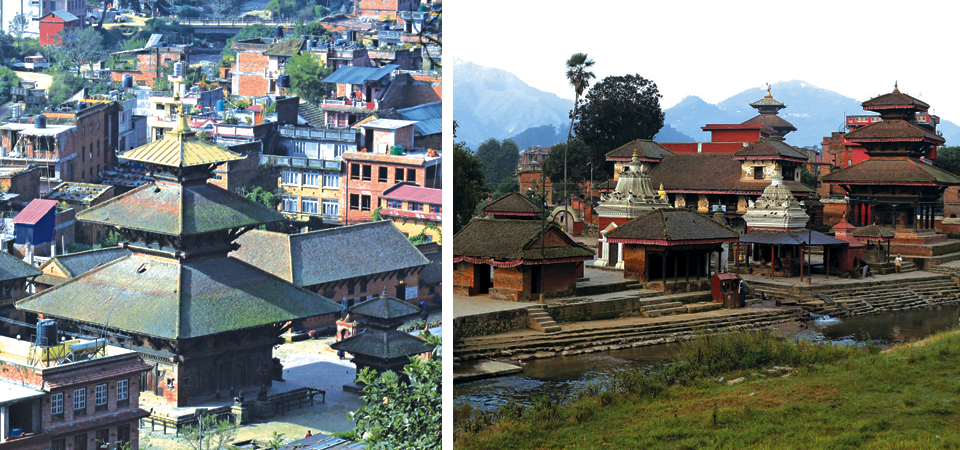WHERE DIVINITY MINGLES WITH NATURE

Thirty-two kilometres southeast of Nepal’s capital is a city so divine that merely setting foot in it is believed to gain a person enough virtue to last a lifetime. At the base of the Gorakhnath Hill flow waters so pure that they even cleansed the sins of Lord Indra, the king of heaven.
A city built on the penance of gods like Bishnu, praised by godmen like Gorakhnath, Shankaracharya and Bandhudatta and visited by countless esteemed personalities from the Lichhavi King Mandev to Prithvi Narayan Shah to the British Princess Diana. Built on a single rock ‘Ashmapur,’ the confluence of three deific rivers ‘Triveni,’ the place where a dead bamboo jabbed on a rock not only came back to life but actually created a forest ‘Palanti,’ the birthplace of Namobuddha (a previous incarnation of Buddha) and the town from where Yamaris originated from – the city of Panauti is not a mere physical space to be visited but an experience to be had.
Fleeting Experience
But alas, this experience is fast fleeting. Despite being nearly an hour’s drive away from Kathmandu, it has not been able to remain untouched by its so-called development. Gone are the fishes that once thrived in the Punyamata River. Pollution has claimed the Roshi Khola’s rosh (ferocity).
Buildings have started encroaching upon the fields which, up until a few decades ago, were known for growing some of the country’s most delicious potatoes. The city has mutated, as Professor Gerard Toffin, emeritus director of research at the French National Centre for Scientific Research, calls it.
As someone who has been studying the local population, traditions and social and religious organisations of Panauti since the 1970s, Toffin was struck by these ‘mutations’ affecting the architectural landscape of the city so close to his heart, its surroundings and its population, he says. This was a feeling shared by photographer and native Panauti resident Prasant Shrestha, whom he met in 2010.
It was a pairing of the ages, almost in the literal sense of the word, with Toffin representing the older generation who witnessed the Panauti past and Shrestha representing the youths living through the changes of Panauti present. The two have captured these changes in the photobook Panauti: Past – Present [1976-2020].
Fish-Shaped
Panauti, the small fish-shaped settlement that archaeologically dates back to at least the Kirant era and mythically to even the Satya Yuga, is a feeling to be felt. And it is a feeling that had nearly disappeared at the end of the last century. Rampant urbanisation and the insecurity bred by the Maoist insurgency had robbed the city of its charm. Traditions had started going extinct and residents had started leaving.
Thankfully though, that feeling is being restored. The city is coming back to life, its culture being revived. Panauti is rising from the ashes it had so nearly turned into.
The pictures provide a glimpse into the town that is now a part of a municipality named after it. All photos are by Gerard Toffin (1976) and Prasant Shrestha (2020).
(Mishra is a journalist at this daily)
Recent News

Do not make expressions casting dout on election: EC
14 Apr, 2022
CM Bhatta says may New Year 2079 BS inspire positive thinking
14 Apr, 2022
Three new cases, 44 recoveries in 24 hours
14 Apr, 2022
689 climbers of 84 teams so far acquire permits for climbing various peaks this spring season
14 Apr, 2022
How the rising cost of living crisis is impacting Nepal
14 Apr, 2022
US military confirms an interstellar meteor collided with Earth
14 Apr, 2022
Valneva Covid vaccine approved for use in UK
14 Apr, 2022
Chair Prachanda highlights need of unity among Maoist, Communist forces
14 Apr, 2022
Ranbir Kapoor and Alia Bhatt: Bollywood toasts star couple on wedding
14 Apr, 2022
President Bhandari confers decorations (Photo Feature)
14 Apr, 2022









